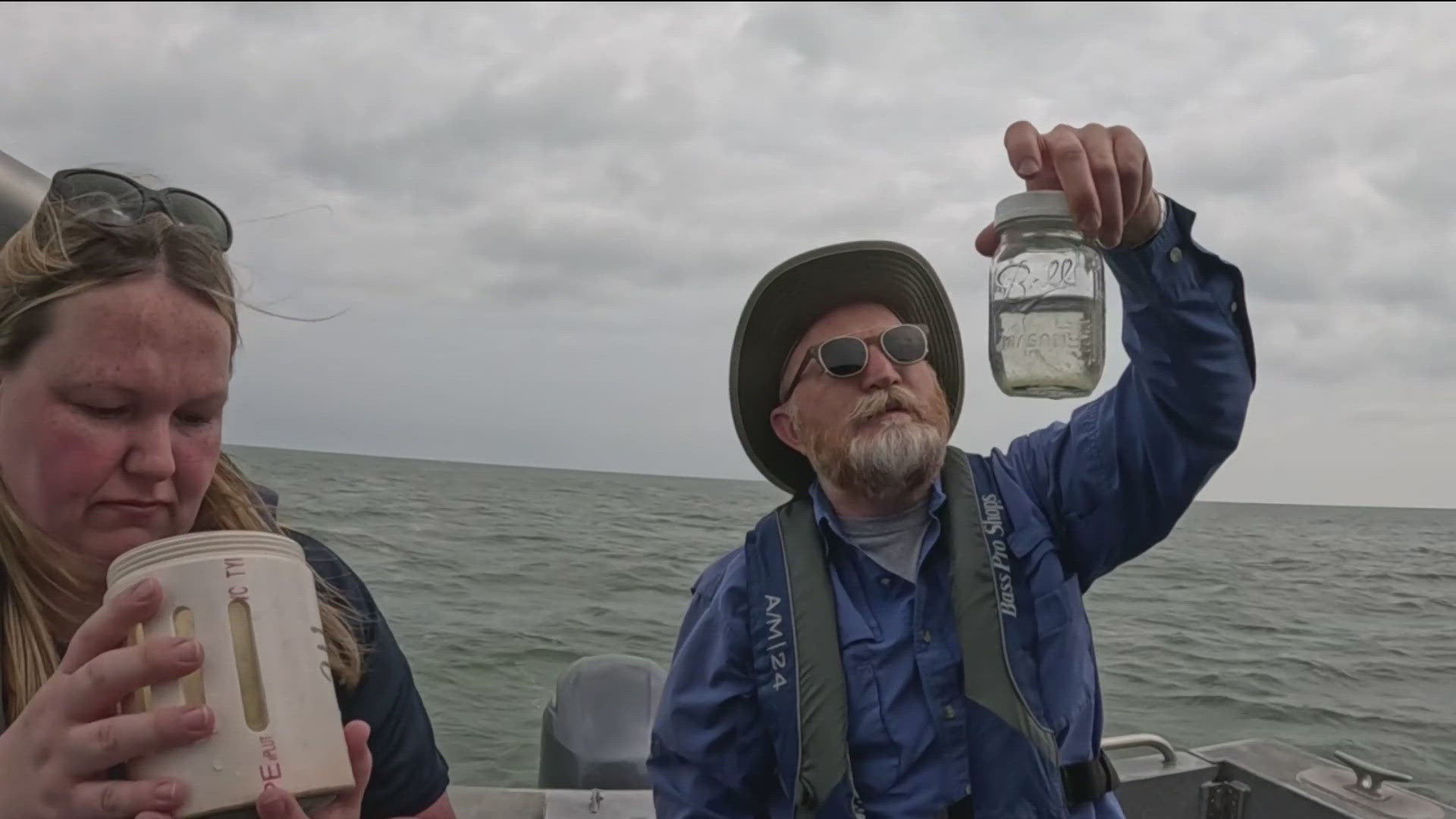OREGON, Ohio —
Summer boat days are a time for many people to relax.
But for researchers from the University of Toledo's Lake Erie Center, it's a time to gather information. They go out on the lake a boat every 10 days during summer.
"We are looking for the general health of the lake, general water quality parameters such as water temperature, the saltiness, how clear it is, the dissolved oxygen, and then the algae levels in the lake," said Thomas Bridgeman, professor and director of the center.
The center has been researching lake ecology and algae blooms for over 25 years, but after the 2014 water crisis, a new emphasis was added. Protecting the water supply and understanding the toxins harmful algae produce became two new goals for the center.
The Lake Erie Center works with the city of Toledo's Water Treatment Plant, along with the ones in Bowling Green and Defiance.
Over the past 10 years, the technology has evolved and more sensors have been added to monitor the water.
"We can now know in real-time from buoys in the lake that we did not have in 2014 how bad the bloom is," Bridgeman said. "Is it approaching a water treatment plant?"
There have been advancements in how to treat algal blooms once they get in the water treatment plant, Bridgeman said.
One mystery scientists are still working to figure out is what causes certain algal blooms to produce toxins. Bridgeman said there could be the same amount of algae in the lake there was last year, but it could be twice as toxic.
To try and get answers, researchers bring water samples back to the lab and conduct different experiments, such as adding phosphorous and nitrogen to water samples to see what impact that has on toxin production.
Bridgeman said the center is working on creating more advanced sensors to monitor the health of the lake.
He says the real solution to the water problems is on the land.
"It's what we are doing on the watershed, municipal wastewater, agricultural runoff," Bridgeman said. "That's what's causing the blooms and that's where the emphasis needs to be for preventing these blooms in the future."

